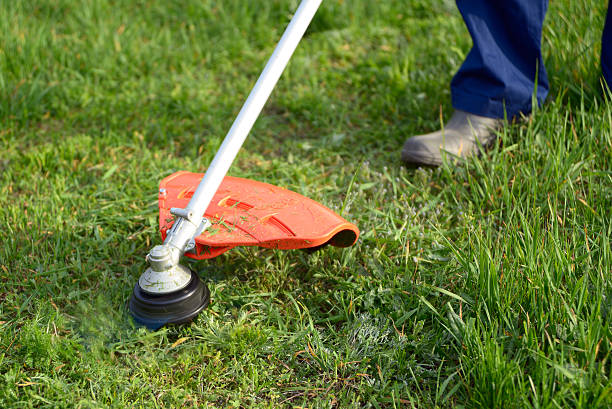The Grass Trimmer is a versatile piece of equipment that can develop into a constructive partner in ensuring that your lawn always looks its best. Depending on the propulsion system type, trimmers can come in a wide variety of forms and dimensions; nevertheless, the operation fundamentals are consistent across the board.
How does a grass trimmer cut the grass?
A Grass Trimmer is a type of garden tool that cuts the grass using a nylon line rather than a blade. The propulsion system spins the wire at such a high speed that it can easily slice through the grass without any difficulty. In addition, the bar can more easily cut through garden trash because of the principle of centrifugal force, which causes the line to grow more rigid the faster it is spun. A shield covering the head of the grass trimmer protects the user from the cutting line and any debris that the grass trimmer may throw up.
Grass trimmers can be run on several different power sources. Trimmers fueled by gasoline typically have the highest power since the internal combustion engine within them can spin the wire much faster. As a result, the type of machine in question works best in grassy areas with the most grass. On the other hand, an electric or battery-powered grass trimmer would work well for lesser chores because the user wouldn’t have to exert themselves to the same degree as they would with a gas-powered model.
Electric clippers will come with a wire that can be plugged into the wall sockets that supply the main power. Because these cables can commonly range from 10 to 12 meters in length, you will need to measure the area of your garden before buying the machine.
Breakages in the line are possible when using this sort of equipment, despite their relatively inexpensive replacement parts. The following are some of the reasons why:
Close Contact
The most common cause of breakage and the most common cause overall is harsh contact with something in the garden. When the head is brought too close to garden items like stones, walls, or paving edges, which causes the line to snap, breakages typically occur. This can result in lost fish.
Inaccurate Components
Faulty parts can be to blame for breakages, even though this situation is not desirable. It would be best if you look at the instructions given. By the manufacturer to find out which parts to use.
Normal Use and Abuse
Unfortunately, general wear and tear can also negatively affect the trimmer. A product otherwise in great shape could lose some of its value over time. During the winter, the low temperatures can cause the nylon line to become brittle and difficult to work with. During the winter months, you should keep the nylon line in a location. So that is not exposed to the cold and is instead warm.
You must ensure that your lawn trimmer is clean if you want it to last as long as possible. A trimmer that has recently been cleaned will always function better than one that is dirty. Dirt and debris can accumulate in the trimmer head and clog up the line mechanism. As a result, the trimmer will be less effective at spinning the cutting line.
The Direction of the Spin
When it comes to getting the most out of your lawn trimmer, having a firm grasp on the direction in which the spin is applied is of the utmost importance. For example, if the line is spun in a way that goes against the rule of clockwise rotation. The grass will be throw out of the left side, and the right side will cut better.
If the spin is counterclockwise and you are traveling along a fence or curb. So keep the right side of your body closer to where you are working. This applies only if you are moving counterclockwise. If you do, the head will be in the right place. And the grass will come out onto the path you’re trying to clear. This means the crown is positioned, so the grass is ejected to the left. Because of this, there is a possibility that the trimmer will become clogged and not work correctly.


